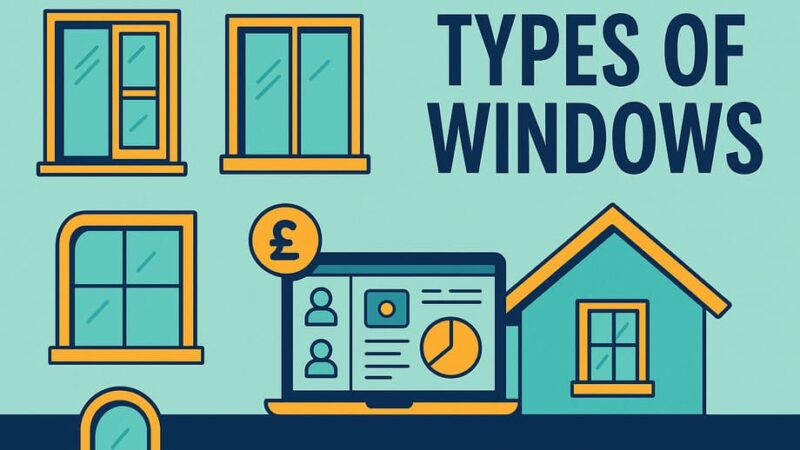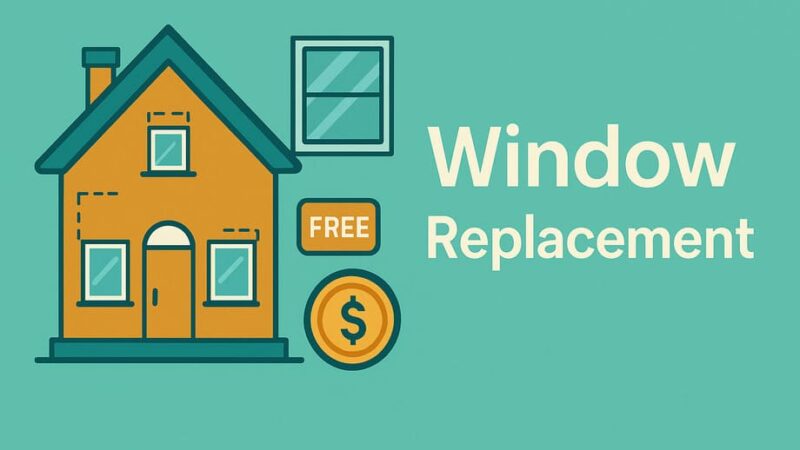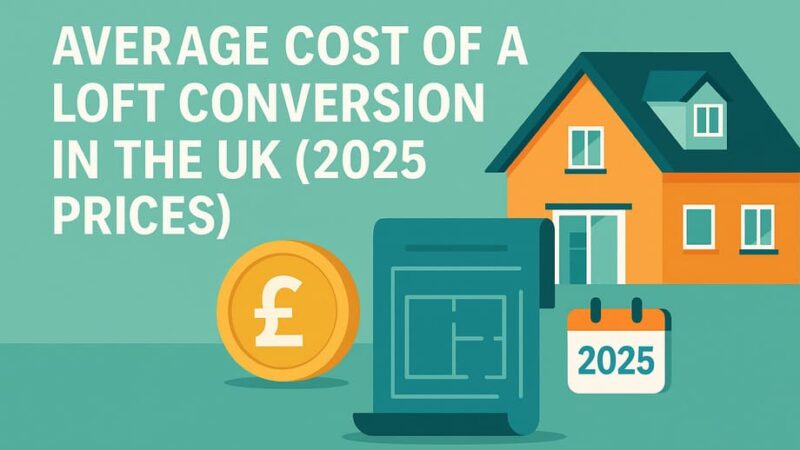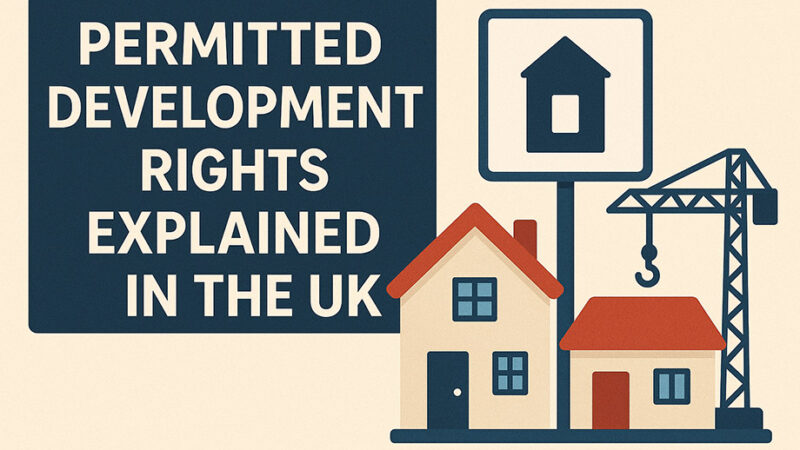Does a Conservatory Add Value to Your Home in the UK?
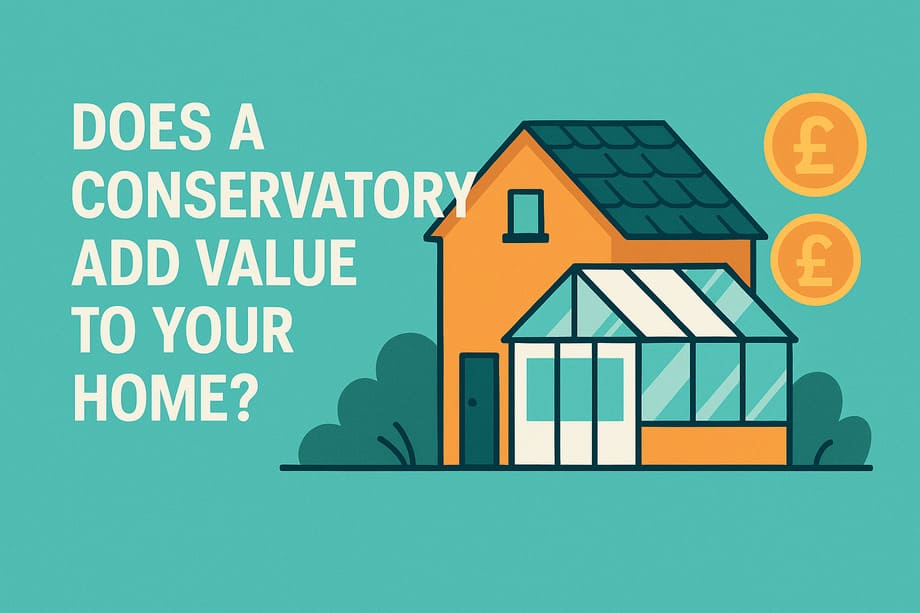
A conservatory has been a quintessentially British home improvement for generations. You may have travelled by train and spent time looking into the backs of people’s houses – it’s noticeable how many have extensions and how often these comprise conservatories. But with home improvement costs rising and buyers becoming increasingly discerning, the crucial question remains: does a conservatory actually add value to your home?
The answer isn’t straightforward. While some conservatories can increase property values by up to 15%, others might actually devalue your home. The difference lies in the quality, design, and type of conservatory you choose.
Whether you’re considering adding a conservatory to create more living space, improve your lifestyle, or boost your property’s market appeal, understanding what makes a valuable conservatory versus a costly mistake is essential for making the right investment decision.
This guide explores the real impact conservatories have on UK property values, what factors influence their worth, and whether investing in one makes financial sense in 2025.
What Is a Conservatory’s Impact on Property Value?
Not all conservatory additions are created equal when it comes to adding value to your property. The impact depends heavily on quality, design, and integration with your existing home.
Conservatories can affect property value in different ways:
Positive Impact: High-quality, well-designed conservatories that integrate seamlessly with your property Neutral Impact: Basic conservatories that provide extra space without significantly affecting value
Negative Impact: Poor-quality or poorly designed conservatories that buyers see as liabilities
The key factors that determine impact include:
Quality and Materials: Premium materials and professional installation versus cheap, poorly constructed alternatives
Roof Type: Modern solid roofs versus old glass or polycarbonate roofs that create unusable spaces Integration: How well the conservatory flows with existing architecture and living spaces
Functionality: Year-round usability versus seasonal-only spaces
Critical insight: Most old conservatories have glass or polycarbonate roofs. These can be cheaper to install, but they can lead to an unusable living space that actually decreases the value of your home rather than adds to it.
The key principle is that conservatories must enhance your property rather than appear as cheap additions that future buyers will need to replace or remove.
The Average Value Boost from Conservatories
Current Market Value Estimates
Research and expert opinions provide a range of value estimates for conservatory additions, with quality being the determining factor.
Industry Expert Opinions: Phil Spencer, the popular property expert says, on average, a conservatory can add 7% to your property value. However, that’s not guaranteed.
Range of Value Addition:
- A conservatory can add 5-10% more to the value of your home, depending on your location and the specifications of the conservatory
- Done properly, they are estimated to add between 5% to 15% to the value of a home
- A conservatory can increase the value of your home by up to 7%
Regional Example: With the average house price in the North-west standing at just over £243,000, this could mean upping the value by between around £12,200 to almost £36,500.
Quality Makes the Difference
High-Quality Conservatories: A thoughtfully-designed conservatory, built from good quality materials, can significantly increase the value of a home, typically by up to 5–10% depending on the specification and integration with the property.
Poor-Quality Risks: A shoddy uPVC conservatory could detract value as buyers may think it needs replacing. Cheap conservatories can quickly become eyesores, reducing curb appeal and lowering the value of your property.
Investment vs Return Analysis
Cost vs Value Comparison: The cost of adding a conservatory can start from around £30,000 to £70,000 or more. Compare that to adding a conservatory for approximately £10,000 and you can see the significant difference between the initial outlays compared to traditional extensions.
Extension Comparison: According to whatprice, an average house extension in the UK in 2024 costs between £1,400 and £3,000 per m² (excluding VAT). That equates to a small single-storey extension costing around £25,640 while a large double-storey extension can cost up to £86,300.
Factors That Influence Added Value
Roof Type: The Critical Factor
The type of roof on your conservatory is perhaps the most important factor in determining whether it adds or detracts from your property value.
Problems with Traditional Roofs: Glass and polycarbonate conservatory roofs don’t regulate internal temperatures very well. During summer, they can become unbearably hot. In the colder months, heat quickly escapes through the poorly insulated roof and makes the extra space way too cold to enjoy.
Energy Cost Issues: Because of their poor temperature regulation, old conservatories often leave homeowners with higher energy costs. This means that glass or polycarbonate conservatories can cost homeowners more than £200 per year – which isn’t a very attractive figure for most local estate agents or potential buyers.
The Solution: The best conservatory investment is a solid, warm roof conservatory. By replacing a glass or polycarbonate roof with a warm roof, you can create a more usable living space that boosts natural light, decreases your energy bills and almost certainly adds value to your home.
Quality of Materials and Construction
Premium Materials Pay Off: Use high-quality materials. Increases durability and buyer confidence. UPVC is the cheapest and easiest to maintain. Timber looks better but can be very pricey and will need treating every few years, but it looks good and is the warmest material you can use.
Modern Options: Modern aluminium can look very stylish, needs almost no maintenance, and can be built with slim supports, which helps blur the line between inside and outside.
Glazing Quality: Double or even triple glazing is recommended, and you can add a low-E coating or argon gas filling to make it even more energy-efficient. Features such as energy-efficient Planitherm glass or self-cleaning glass help futureproof your home and are attractive to potential buyers.
Design Integration and Style Matching
Architectural Harmony: Match the conservatory style to the property. Ensures a coherent look that won’t be off-putting to a potential buyer. Make sure your conservatory blends with the rest of the property.
Professional Advice: Your conservatory design should be informed by the architecture and decor of your home. You don’t want your conservatory to look out of place, either too modern or old-fashioned. It should blend seamlessly, while still making a statement.
Size and Positioning Considerations
Garden Impact: Be wary of installing a conservatory if you only have a small garden. Make sure you have a big enough garden to accommodate a conservatory. Buyers can be put off by a home with a conservatory that takes up most of the garden space.
Orientation Matters: Pay particular attention to the aspect of your conservatory. South means it will be hot in summer, so that you may need extra ventilation. North means more heating and good insulation. East gets the morning sun but may need heating later in the day, and the opposite is true for structures facing west.
Functionality and Multi-Purpose Use
Versatility Adds Value: The primary way a conservatory can add value to your home is by increasing your living space. If designed and installed correctly, they can be multi-purpose rooms, giving you more living space without needing costly extension to your main property.
Popular Uses: Whether you are looking for a sunroom, playroom or even a home office, a conservatory can fit the bill. This versatility is very attractive to potential buyers who are seeking comfortable spaces that they can adapt to suit their needs.
Year-Round Usability: It MUST be heated so that you can use it as a second reception room or children’s play room, for instance, throughout the year. Add underfloor heating. Enhances overall comfort and temperature control for year-round use.
Alternatives That May Add More Value
Traditional Extensions vs Conservatories
Extension Value Comparison: On average, an extension will add more value to your home than a conservatory – an estimated 5% – 20% versus the 5%-10% a conservatory adds. It’s estimated that an extension can add around 11% to a property’s value, while a conservatory can add 7%.
Extension Benefits:
- Higher percentage value addition
- More substantial structural addition
- Better integration with existing property
- Higher perceived value by buyers
Extension Drawbacks:
- Significantly higher costs
- Longer construction times
- More disruptive installation process
- Usually requires planning permission
Orangeries: The Premium Middle Ground
Orangery Advantages: If you have a big budget and a big property, consider an orangery. An orangery is not a type of conservatory, as sometimes thought, but a predominantly brick or metal building with large windows and, often, a flat roof.
Value Comparison: Whether an orangery is a better choice for you will depend on the look you are going for, the space available, and the intended function. Orangeries are often warmer than conservatories in the winter but lack panoramic views. Orangeries also tend to be more expensive than conservatories.
When to Consider Other Options
Ceiling Price Limitations: The ceiling price is the maximum amount your house will sell for. If your house has reached its ceiling price, you cannot add property value, no matter which home improvements you make.
Calculation Method: You can calculate an approximate ceiling price by seeing what similar-sized and aged properties in your area have sold for recently. For an accurate ceiling price, though, get a valuation from a local expert.
Alternative Improvements: If you’re at ceiling price, other improvements might provide better lifestyle benefits:
- Internal reconfiguration for better space utilization
- Kitchen or bathroom upgrades
- Energy efficiency improvements
- Garden landscaping
Should You Invest in a Conservatory in 2025?
When a Conservatory Makes Sense
You Should Consider a Conservatory If:
- Your property hasn’t reached its ceiling price
- You have adequate garden space to accommodate the structure
- You want additional living space at lower cost than traditional extensions
- You can invest in quality materials and solid roof construction
- The design will complement your home’s existing architecture
Investment Criteria: Adding a conservatory to your property is usually a good investment. Not only do you acquire an extra living space with far less disruption than a traditional extension, but they are more cost-effective too.
When to Think Twice
Scenarios Where Conservatories May Not Add Value: There are a couple of scenarios where adding a conservatory to your home will not add value.
Property Limitations:
- If your house has reached its ceiling price
- If you have very limited garden space
- If you’re planning to sell very soon after installation
- If the style would clash dramatically with your property
Quality Standards for 2025
Modern Buyer Expectations: When it comes to home extensions, most buyers want a warm, modern and usable space. They also want something energy-efficient – that won’t cost them more in heating and maintenance long-term than what the extra space is worth.
Essential Features:
- Install double, triple or low-E glass. Improves energy efficiency for lower heating bills and a smaller carbon footprint
- Consider installing energy-efficient features
- Keep the decor simple for a versatile room
- Ensure year-round temperature control
Professional Guidance
Getting Expert Advice: Before doing anything, it’s worth enlisting the help of your local estate agent, who can give you an excellent idea of the value of your home if you add a conservatory.
Quality Assurance: It’s best to add a good-quality, well-built structure, and this partly depends on using a company with a good reputation. Reputable firms will be registered with either FENSA or the Glass and Glazing Federation.
Planning and Permissions
Planning Permission Requirements: Conservatories are treated as extensions. For a house they are classed as “permitted development” (PD) as long as they don’t cover more than half the area of the original building, meaning you don’t need to contact the planners.
Size and Height Restrictions:
- Your conservatory must be less than 30 square metres in floor area
- The conservatory can not extend further than half of the land around the original framework
- Your conservatory can only be as high as your existing roof
- If your conservatory can’t be taller than three metres if it comes within two metres of a boundary
Common Mistakes That Reduce Value
Cheap Materials and Poor Construction
The False Economy: Conservatories can be expensive, and it can be tempting to plump for the cheapest option. Cheaper isn’t always the most cost-effective. If your conservatory is poorly installed or uses sub-par materials, you may pay more for costly repairs in the long run.
Long-term Consequences: A badly constructed conservatory can quickly become an eyesore, reducing curb appeal and lowering the value of your property. An ugly conservatory can be offputting to a potential buyer, even being a deal breaker in going ahead with the purchase in extreme circumstances.
Inadequate Climate Control
Temperature Regulation Problems: During summer, they can become unbearably hot. In the colder months, heat quickly escapes through the poorly insulated roof and makes the extra space way too cold to enjoy. Therefore, use of these types of conservatories are limited to milder seasons.
Energy Efficiency Issues:
Additional maintenance costs. Finally, conservatories with old roofs leave homeowners with more maintenance responsibilities and costs. Since polycarbonate and glazed roofs aren’t the most durable materials, they need regular cleaning and maintenance to avoid costly repair work.
Poor Integration with Property
Design Mismatch: Your conservatory design should be informed by the architecture and decor of your home. This is particularly important in conservation areas and near listed buildings.
Proportion Problems: You don’t want your conservatory to look out of place, either too modern or old-fashioned. It should blend seamlessly, while still making a statement.
Insufficient Planning
Cost Considerations: Make sure the quotes you get include prices for lighting, heating, ventilation, guttering, flooring, and blinds. Also, consider if there are any extra costs if you’re going for high-spec fittings and heightened security.
Usage Planning: What do you want to happen in your proposed new space? It could be many things – an office, a dining room, a playroom, or a TV space. It could even be all those things at different stages of your life.
Expert Insights from Industry Professionals
Estate Agent Recommendations
According to estate agents, most people looking for a family home want one of two things: a second reception room and a kitchen diner, both of which can be a conservatory.
Professional Tips: Joules Estate Agents say: “One reason why you may want to consider adding a conservatory to your property is the fact that they are an easy way to increase light… Another reason is that not only do they add value to a property, but they also increase the chances of a sale.”
Builder and Industry Expert Advice
Survey Insights: According to a Which survey, people listed what they would be most likely to change if they did it [build a conservatory] all again. 33% said that they would get the self-cleaning glass, 28% said that they would get a bigger conservatory, 21% said they would change the roof to be made of glass.
Popular Motivations: 46% of people get a conservatory for more living space, 35% get it to fill the gap between the home and the garden, 31% of people are replacing an existing conservatory, 26% want to add value to their home and 16% want to get some more natural light.
Property Expert Recommendations
Integration Importance: Phil Spencer, a popular UK property expert, says, conservatories add more value to your home when it ‘feels like part of the house’, rather than just something ‘bolted on the back’, can create a much better flow and ‘enhances the feeling of space’.
Frequently Asked Questions
How much value does a conservatory typically add?
A well-designed conservatory can add between 5-15% to your property value, with the average being around 7% according to property experts like Phil Spencer.
What type of roof is best for adding value?
Solid, warm roofs are the best investment. Old glass or polycarbonate roofs can actually decrease property value due to temperature regulation problems and high energy costs.
Do I need planning permission for a conservatory?
Most conservatories under 30 square meters qualify as “permitted development” and don’t need planning permission, though restrictions apply regarding height and proximity to boundaries.
What’s the minimum spend for a value-adding conservatory?
Quality matters more than cost, but expect to pay £30,000-£70,000 for a conservatory that genuinely adds value. Cheap options around £10,000 may not add any value and could even detract from it.
Is a conservatory better than an extension for adding value?
Extensions typically add more value (11% vs 7%), but conservatories are significantly cheaper and faster to install, often providing better return on investment.
What materials should I avoid?
Basic uPVC conservatories with glass or polycarbonate roofs should be avoided. These can become unusable spaces that buyers see as liabilities rather than assets.
Conclusion
A conservatory can indeed add significant value to your UK home – but only if you invest in quality and design it correctly. The difference between a valuable addition and a costly mistake lies in choosing the right materials, ensuring proper integration, and creating year-round functionality.
Remember:
For Maximum Value Addition:
- Invest in solid, warm roof construction over traditional glass roofs
- Choose quality materials that complement your property’s architecture
- Ensure year-round usability with proper heating and insulation
- Work with reputable, certified installers
For Different Investment Goals:
- Value addition: Focus on quality materials and seamless integration
- Lifestyle improvement: Consider functionality and personal usage needs
- Quick sale preparation: Choose classic designs with broad market appeal
- Long-term investment: Prioritize durability and energy efficiency
For 2025 Decisions:
- Modern buyers expect energy-efficient, year-round usable spaces
- Quality over cost provides better long-term returns
- Get professional valuations before and after to measure actual impact
- Consider alternatives like orangeries or extensions if budget allows
The key insight: Phil Spencer emphasizes that conservatories add the most value when they feel like part of the house rather than something “bolted on the back.”
Whether a conservatory makes sense for your property depends on your current home value, available space, budget, and local market conditions. But when executed with quality materials, thoughtful design, and professional installation, conservatories remain one of the most cost-effective ways to add both space and value to UK homes.
Property values vary significantly by location and individual circumstances. Always consult local estate agents and get professional valuations for advice specific to your property and area.
Last Updated on August 27, 2025 by James Cartwright


